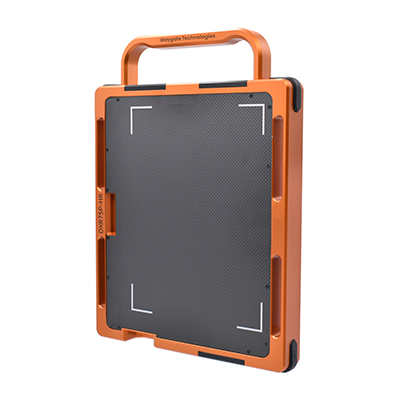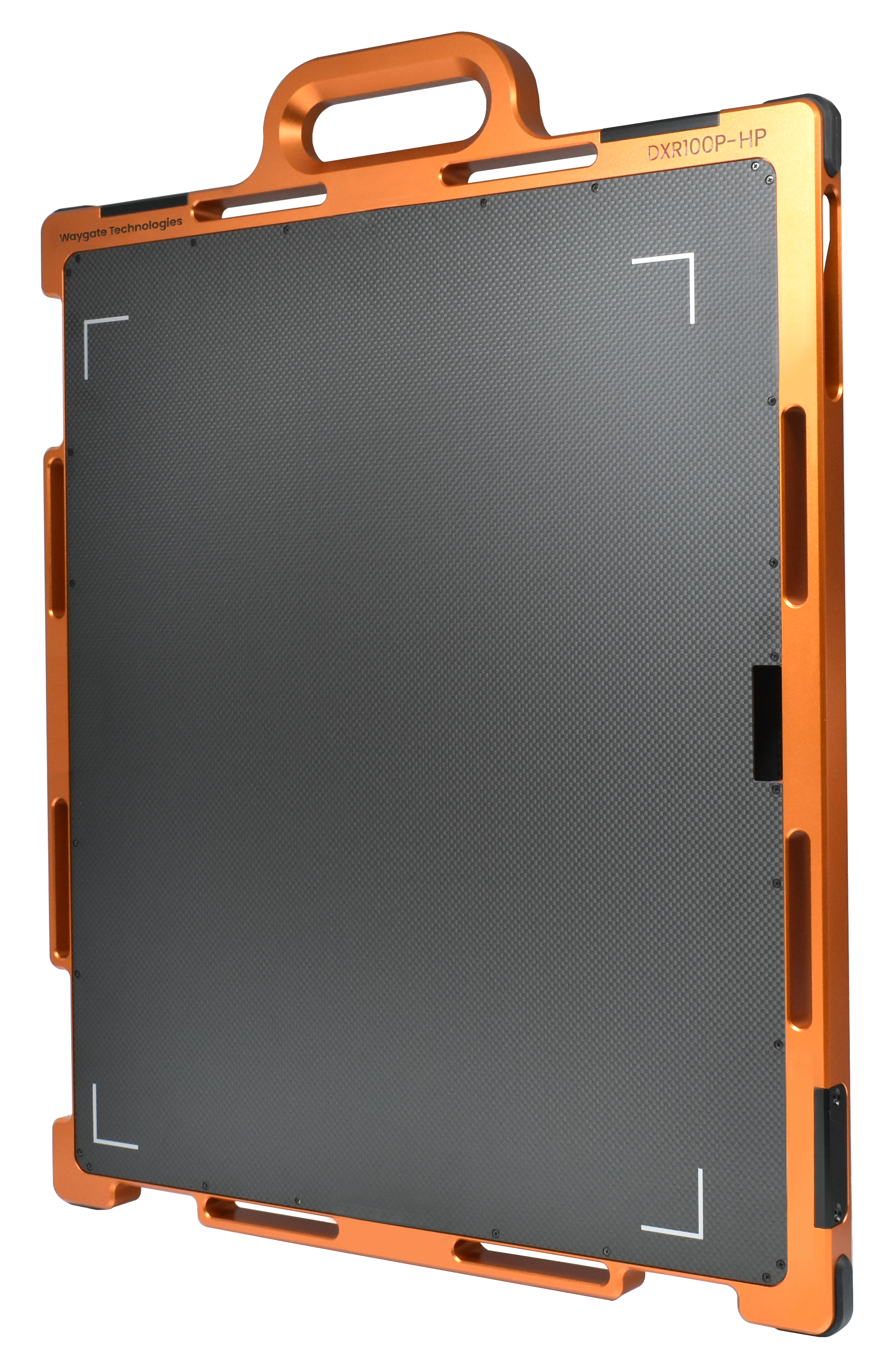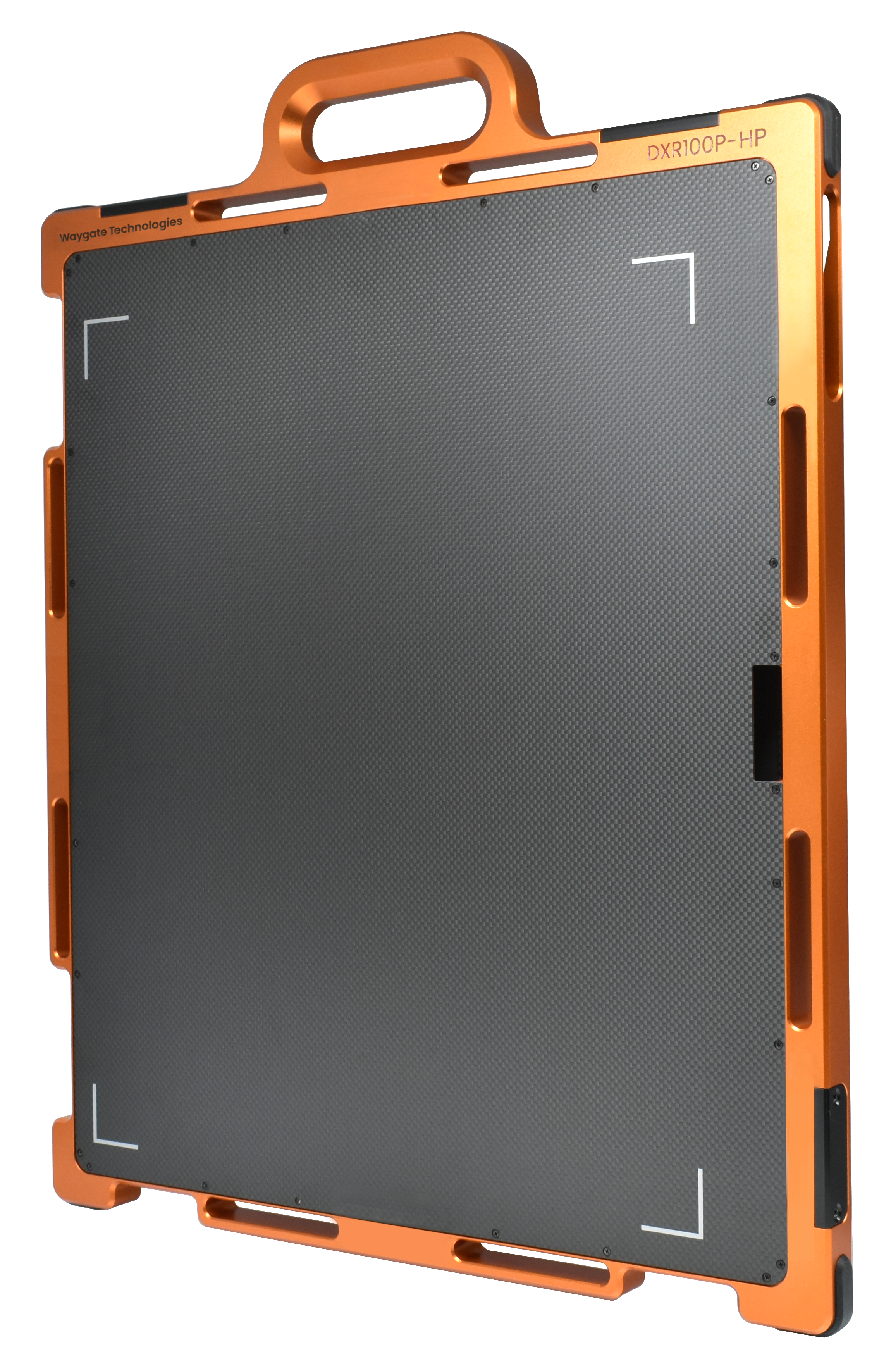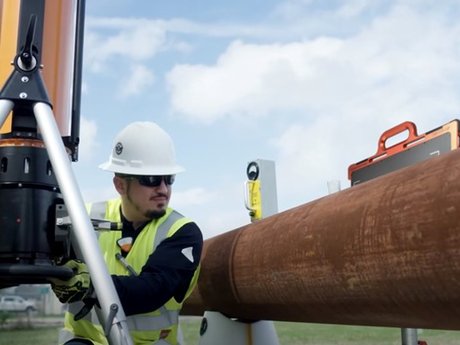
Digital X-Ray Detectors
The new range of mobile DXR detectors and flat panel detectors provides the high-quality, efficient imaging solution required for industrial field testing. The mobile DXR detectors have a reduced thickness that makes them ideal in situations with limited detector positioning freedom. Choose wired or wireless use for simplified operation that matches your needs under every circumstance in Digital Radiography.
Based on Waygate Technologies’ proven expertise in Industrial Radiography and supported by various customer success stories across different segments, the development of our most recent wireless digital X-ray detectors is a logical progression to our product portfolio.
The DXR75P-HR gives you the high, 75-micron pixel resolution required to distinguish fine details for critical applications while supporting ISO 17636-2 class B for weld inspection, offering precision imaging that meets the most stringent standards to ensure both quality and safety.
Rugged inside and out, DXR140P-HC detectors offer the high quality and fine details inspection tasks require, with all the portability field inspectors need.
- 75-micron pixel resolution delivers fine details for critical applications
- Narrow width ideal for situations with limited detector positioning freedom
- Precision imaging that meets the most stringent standards
- Weld inspection in oil & gas, energy, and aviation: transport pipelines, complex structures (spool), boiler tubes, fuel pipes, pressure tubes, pressure vessels, and storage tanks
- Shipyard weld inspection

- Ideal for corrosion monitoring in the oil & gas and energy industries
- High contrast with 140-micron pixel resolution
- Increased dose sensitivity for shorter exposure times and faster throughput
- Can be used with X-ray as well as isotopes
- Oil & gas and energy, in-service inspection: CUI, valve positioning, WT measurement, pipe support, boiler tubes
- Casting inspection
- Aviation MRO
- Military and security
- Structure inspection: concrete, bridges, supports
- Science, art, and archeology
- Power line inspection, GIS

The DXR100P-HP gives you the high, 100-micron pixel resolution, so this versatile detector can cover both worlds: O&G inspections but also weld inspection, supporting ISO 17636-2 class B for weld inspection.
- Weld inspection in oil & gas, energy and aviation: transport pipelines, complex structures (spool), boiler & pressure tubes, fuel pipes, pressure vessels and storage tanks
- Shipyard weld inspection
- Oil & gas and energy, in-service inspection: CUI & WT measurement, valve positioning, pipe support
- Casting inspection
- Aviation MRO
- Military and security
- Structure inspection: concrete, bridges, supports, …
- Science, art and archeology
- Power line inspection, GIS

- The DXR140P-HC is mainly targeting O&G applications where speed and radiographic contrast are of highest importance. The scintillator screen used in the detector is optimized for dose conversion efficiency, resulting in shorter exposure times.
- The DXR75P-HR is targeting high-end (weld) inspection applications. It focuses on SRb (Basic Spatial Resolution) rather than dose conversion efficiency. Slightly higher exposure times are required than DXR140P-HC but resulting in a much better sharpness.
Yes, both detectors can be operated with Isotopes as with X-Ray units. Like conventional Film and CR, DR technology is resulting in a lower radiographic imaging contrast when used in combination with Isotopes. For profile radiography, Isotopes are preferred as they result in a much better definition of inner and outer pipe wall (wall profile), allowing much easier and more accurate measurement results.
Although both detectors are heavily shielded against radiation damage inside and through the armor case, applying ionizing radiation will finally affect the lifetime of the detector. It is therefore important to provide radiation to detector during real imaging only. Unnecessary (direct) radiation to the detector will lead to lifetime reduction (e.g. when warming up the X-Ray unit). The use of collimators, radiation beam diaphragm and/or metallic screen filters preventing direct radiation of the detector will help securing highest lifetime of the detector.
- FULL Wired communication: UTP cable connection between Workstation and System Control Unit (SCU). Tether cable connection between SCI and Detector. As the tether cable supplies power to the detector, a battery pack is not needed to be installed in the detector. The SCU is connected to mains power.
- SEMI Wireless communication 1 (ideal for bunker operation): UTP cable connection between Workstation and System Control Unit (SCU). SCU works as Wireless Access Point for wireless communication with Detector. A battery pack should be installed in the detector, SCU is connected to mains power.
- SEMI Wireless communication 2 (ideal for Field operation): UTP cable connection between Workstation and battery powered Wireless Access Point. Wireless Access Point allows wireless communication with Detector. A battery pack should be installed in the detector.
- FULL Wireless communication (AD HOC): WIFI communication between Host PC and Detector. A battery pack should be installed in the detector.
- Frame integration: Relates to the amount of radiation dose that gets accumulated in the detectors TFT array in order to form a single image frame. The higher the frame integration, the higher the digital signal in radiographic image, the better the radiographic contrast sensitivity as well as the radiographs POD.
- Frame averaging: If for some reason the radiographic image quality performance of a single frame image is insufficient, the operator can decide upon averaging multiple frames. By selecting frame averaging, the SNR performance and therefore radiographic contrast sensitivity will increase. Overall image intensity in the radiograph however remains unchanged.
- Frame accumulation: In the event of extreme low power radiation source (e.g. low activity isotope), extreme long integration times would be required in order to build the image. Having such extreme long integration times, the noise component in the image will increase proportional with the image signal, resulting in a lower SNR. Better would be to reduce frame integration to an acceptable level and accumulate several frames in order to build the final image.
Flat panel detectors are solid-state, x-ray imaging devices often used in the medical and dental fields. These digital radiography devices use indirect conversion of x-rays to light or direct conversion which converts x-rays to charge. Flat panel detectors are made up of sensing elements (pixels) with the most sensitive part called the pixel array, which is a rectangular or square area that varies in size depending on application.



